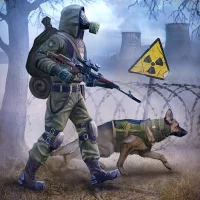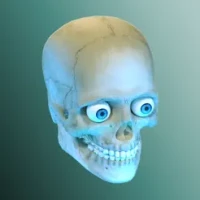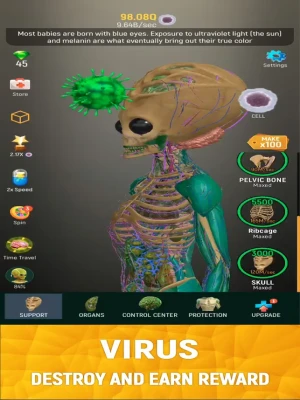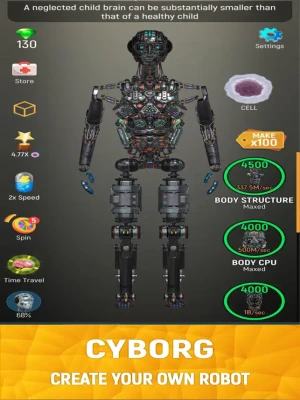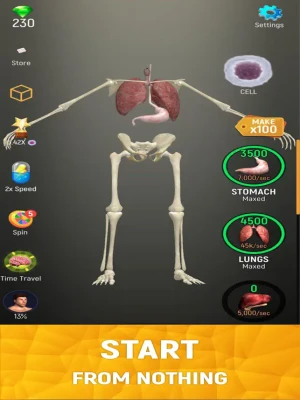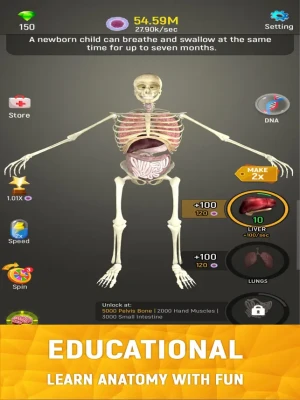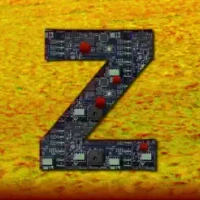
Latest Version
1.23.3\"},{\"releaseDate\":\"2025-04-01
August 16, 2025
Make a Human From First Cell
Games
iOS
273.1 MB
0
Free
Report a Problem
More About Idle Human
The Fascinating Journey of Human Body Development: From Bones to Organs
Understanding the intricate sequence of human body development is a captivating journey that reveals how life begins and evolves. This article explores the remarkable process, starting from the formation of the first bones, progressing through the development of vital organs, and culminating in the complex network of nerves and muscles that create a fully functional human body.
The Formation of Bones: The Foundation of Life
The journey of human development begins with the formation of bones, which serve as the structural framework of the body. This process, known as ossification, typically starts in the embryonic stage. Initially, the human skeleton is composed of cartilage, which gradually transforms into bone through a series of biochemical processes.
During the first trimester of pregnancy, the basic shape of the skeleton begins to take form. By the end of this period, the primary ossification centers appear, marking the beginning of bone development. These centers are crucial as they dictate the growth and shape of the bones, ultimately leading to a fully developed skeletal system.
Organ Development: The Heart of Human Functionality
As the skeletal structure solidifies, the next phase of development focuses on the formation of vital organs. This stage is critical, as organs are essential for sustaining life. The heart, lungs, liver, and kidneys begin to develop in a highly coordinated manner, each playing a unique role in the body’s functionality.
The heart, often referred to as the body’s engine, starts beating around the sixth week of gestation. This early heartbeat is a significant milestone, as it marks the beginning of blood circulation, which is vital for delivering oxygen and nutrients to developing tissues.
Simultaneously, the lungs begin to form, preparing for the crucial task of respiration. The liver and kidneys also develop during this period, taking on essential roles in metabolism and waste elimination. This intricate orchestration of organ development is a testament to the complexity of human biology.
Nervous System Development: The Body’s Communication Network
Following the establishment of the skeletal and organ systems, the development of the nervous system takes center stage. The nervous system is responsible for communication within the body, coordinating actions and responses to external stimuli.
The brain and spinal cord begin to form early in embryonic development, originating from a structure known as the neural tube. As the nervous system matures, neurons proliferate and establish connections, creating a vast network that enables sensory perception and motor function.
By the end of the second trimester, the basic structure of the nervous system is in place, allowing for the development of reflexes and basic movements. This stage is crucial for the future coordination of muscles and the overall functionality of the body.
Muscle Development: The Power Behind Movement
With the skeletal, organ, and nervous systems established, muscle development begins to take shape. Muscles are essential for movement, and their development is closely linked to the nervous system. As neurons connect with muscle fibers, the body gains the ability to perform voluntary and involuntary movements.
Muscle development occurs in stages, starting with the formation of myoblasts, which are the precursor cells to muscle fibers. These myoblasts fuse to form multinucleated muscle fibers, which then differentiate into various types of muscle tissue, including skeletal, cardiac, and smooth muscles.
By the time of birth, the muscular system is sufficiently developed to allow for basic movements, such as grasping and kicking. This development is crucial for the infant’s ability to interact with the environment and begin the learning process.
The Complete Human Body: A Marvel of Nature
As the journey of human development comes to a close, the result is a complete human body, a marvel of biological engineering. Each system—skeletal, muscular, organ, and nervous—works in harmony to create a living organism capable of complex functions and interactions.
The intricate design of the human body is not only a testament to the wonders of biology but also highlights the importance of each developmental stage. From the first bones to the fully formed organs, nerves, and muscles, every aspect plays a vital role in ensuring survival and functionality.
Conclusion: The Wonder of Human Development
The sequence of human body development is a fascinating journey that showcases the complexity and beauty of life. Understanding this process not only deepens our appreciation for the human body but also emphasizes the importance of health and well-being throughout all stages of life. As we continue to explore the intricacies of human biology, we uncover the remarkable capabilities that define our existence.
Rate the App
User Reviews
Popular Apps










Editor's Choice



